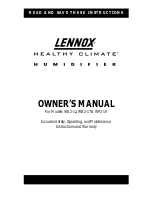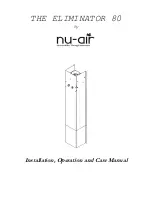
•
NEVER
stand or sit where you could slip or stumble into the
equipment while working on it.
•
DO NOT
wear loose clothing or jewelry, which can be caught while working on the
equipment. In addition, cover or tie back long hair.
•
Clean the equipment and surrounding area
DAILY
, and inspect the machine for loose,
missing or broken parts.
•
Shut off power to the equipment when it is not in use. Turn the switch to the
OFF
position, or unplug it from the power source.
Maintenance Responsibility
Proper maintenance is essential to safety. If you are a maintenance worker, you must make
safety a priority to effectively repair and maintain equipment.
Before removing, adjusting, or replacing parts on a machine, remember to turn off all electric
supplies and all accessory equipment at the machine, and disconnect and lockout electrical
power. Attach warning tags to the disconnect switch.
When you need to perform maintenance or repair work on equipment above floor level, use a
solid platform or a hydraulic elevator. If there is a permanently installed catwalk on your
equipment, use it. The work platform should have secure footing and a place for tools and
parts.
DO NOT
climb on machines or work from ladders.
If you need to repair a large component, use appropriate handling equipment. Before you use
handling equipment (portable “A” frames, electric boom trucks, fork trucks, overhead cranes)
be sure the load does not exceed the capacity of the handling equipment or cause it to become
unstable.
Carefully test the condition of lifting cables, chains, ropes, slings, and hooks before using
them to lift a load.
Be sure that all non-current carrying parts are correctly connected to earth ground with an
electrical conductor that complies with current codes. Install in accordance with national and
local codes.
When you have completed the repair or maintenance procedure, check your work and remove
your tools, rigging, and handling equipment.
Do not restore power to the equipment until all persons are clear of the area.
DO NOT
start
and run the machine until you are sure all parts are functioning correctly.
BEFORE
you turn the machine to the operator for production, verify all equipment
enclosure panels, guards and safety devices are in place and functioning properly.
Reporting a Safety Defect
If you believe that your equipment has a defect that could cause injury, you should
immediately discontinue its use and inform the manufacturer.
The principle factors that can result in injury are failure to follow proper operating procedures
(i.e. lockout/tag out), or failure to maintain a clean and safe working environment.
Portable Drying/Conveying Systems
Chapter 1: Safety
10 of 63











































